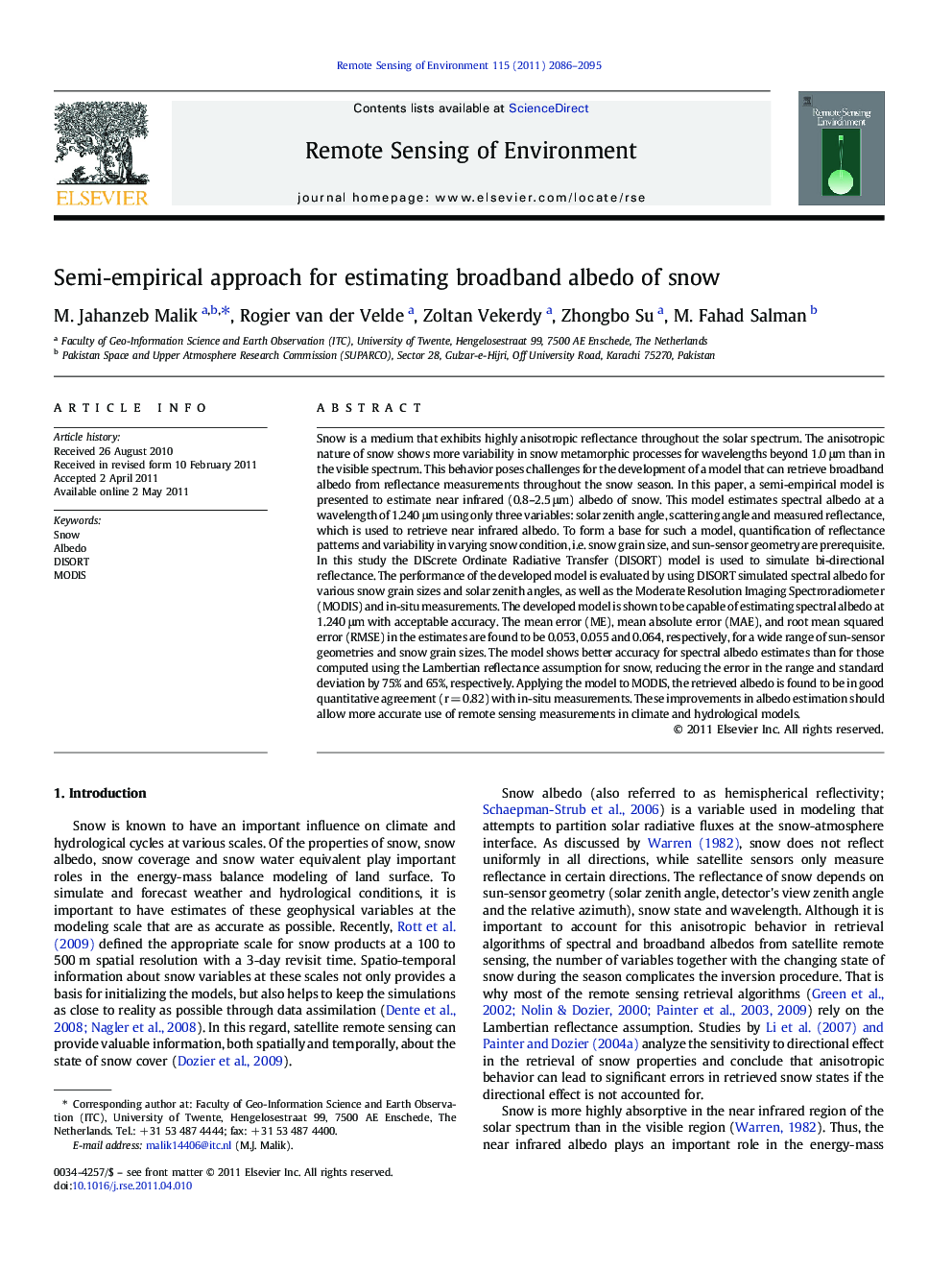| کد مقاله | کد نشریه | سال انتشار | مقاله انگلیسی | نسخه تمام متن |
|---|---|---|---|---|
| 4459545 | 1621289 | 2011 | 10 صفحه PDF | دانلود رایگان |

Snow is a medium that exhibits highly anisotropic reflectance throughout the solar spectrum. The anisotropic nature of snow shows more variability in snow metamorphic processes for wavelengths beyond 1.0 μm than in the visible spectrum. This behavior poses challenges for the development of a model that can retrieve broadband albedo from reflectance measurements throughout the snow season. In this paper, a semi-empirical model is presented to estimate near infrared (0.8–2.5 μm) albedo of snow. This model estimates spectral albedo at a wavelength of 1.240 μm using only three variables: solar zenith angle, scattering angle and measured reflectance, which is used to retrieve near infrared albedo. To form a base for such a model, quantification of reflectance patterns and variability in varying snow condition, i.e. snow grain size, and sun-sensor geometry are prerequisite. In this study the DIScrete Ordinate Radiative Transfer (DISORT) model is used to simulate bi-directional reflectance. The performance of the developed model is evaluated by using DISORT simulated spectral albedo for various snow grain sizes and solar zenith angles, as well as the Moderate Resolution Imaging Spectroradiometer (MODIS) and in-situ measurements. The developed model is shown to be capable of estimating spectral albedo at 1.240 μm with acceptable accuracy. The mean error (ME), mean absolute error (MAE), and root mean squared error (RMSE) in the estimates are found to be 0.053, 0.055 and 0.064, respectively, for a wide range of sun-sensor geometries and snow grain sizes. The model shows better accuracy for spectral albedo estimates than for those computed using the Lambertian reflectance assumption for snow, reducing the error in the range and standard deviation by 75% and 65%, respectively. Applying the model to MODIS, the retrieved albedo is found to be in good quantitative agreement (r = 0.82) with in-situ measurements. These improvements in albedo estimation should allow more accurate use of remote sensing measurements in climate and hydrological models.
Research highlights
► A semi-empirical model is presented to estimate near infrared (0.8–2.5 μm) albedo of snow.
► Overall, model shows better accuracy than the Lambertian reflectance assumption for snow.
► The model performs better than Lambertian for larger solar zenith angles (i.e., > 25°).
► The retrieved albedo is found to be in good quantitative agreement (r = 0.82) with in-situ measurements.
► In comparison to MOD10A1, the semi-empirical model performs better.
Journal: Remote Sensing of Environment - Volume 115, Issue 8, 15 August 2011, Pages 2086–2095